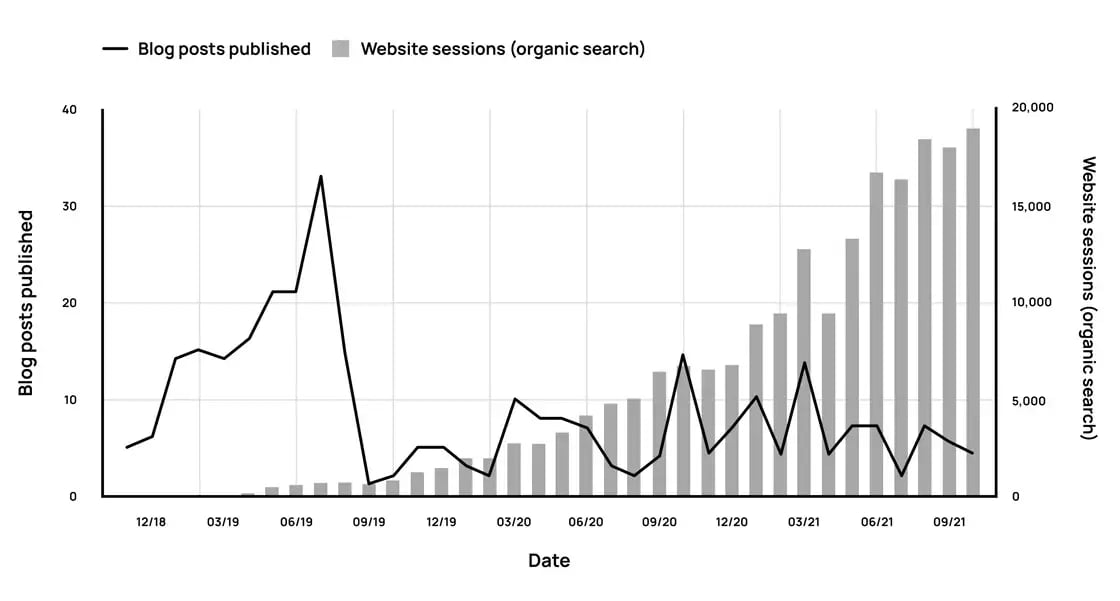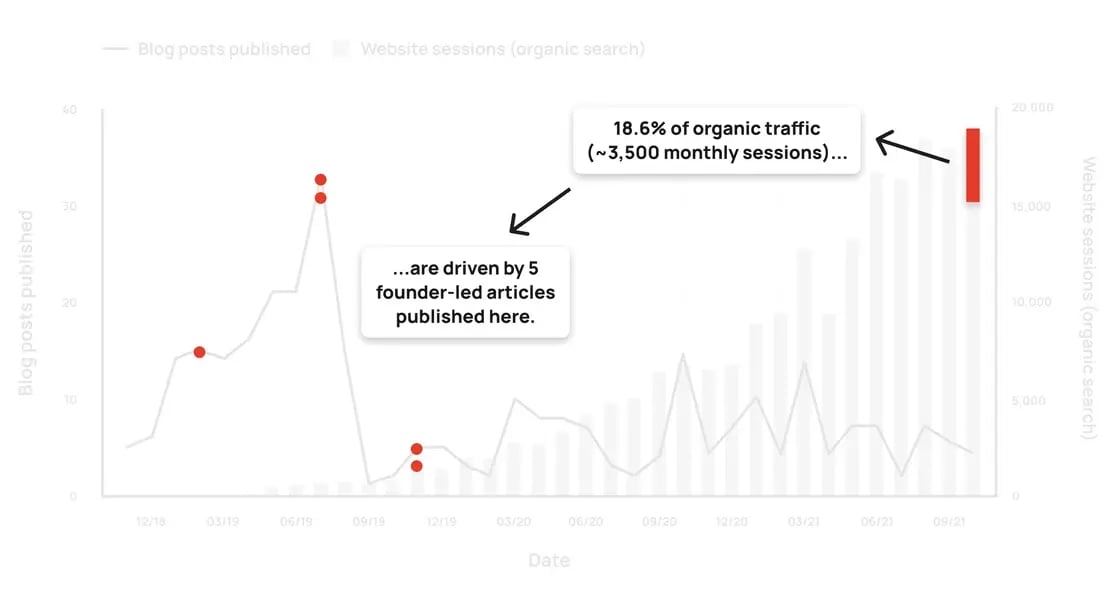In the earliest stages of a SaaS company—pre-seed, seed, maybe even into pre-Series A—there’s one undeniable truth: the founder is the marketing engine.
You might not identify as a marketer. You didn’t start your company to run email campaigns, write LinkedIn posts, or optimize landing pages. But right now, nobody is more qualified to tell the story, shape the market narrative, and connect with innovators and early adopters than you.
This isn’t a compromise. It’s your superpower.
Don't believe me? At T2D3, we work with early-stage SaaS companies to help them lay the strategic foundations for scale. Again and again, we’ve seen one simple pattern: the most successful early-stage companies don’t “wait to hire marketing.” They lead with it—personally, and intentionally—until they have traction, insight, and confidence to scale it beyond themselves.
This is your guide to doing exactly that: how to run a smart, scrappy, and effective founder-led marketing motion that builds traction without blowing your burn rate.
Why Founder-Led Marketing Is a Strategic Advantage
In early-stage SaaS, resources are tight and ambiguity is often high. The product is evolving, your ICP is still being shaped, messaging can change week over week or month over month. In this kind of environment, traditional marketing often doesn't work—not because it’s broken, but because it’s too slow and too detached.
You, the founder, are unique in that you have unique insight into your product, and the problems surrounding it.
You’re on sales calls. You’re collecting feedback directly from users. You’re fielding investor questions and pitching your vision. You live and breathe the problem.That level of proximity gives you a kind of marketing instinct that can’t be outsourced this early.
It’s not just about being close to the customer. Founder-led marketing also works because buyers trust you more than they trust “marketing.” People want to hear directly from the person who built the product — the subject matter expert (SME). An audience, especially an innovator or early adopter audience, wants insight, not polish... Authenticity, not automation.
On top of that, as the founder, you likely have a lot to say. This is your chance to "nerd" out on your product. Any writing (to an extent) is better than no writing at all — if a topic interests you, it will likely interest your innovators and early adopters. Just write.
The key to starting a marketing engine is to put yourself out there. Let your audience find you. Don't be afraid of perfection when you're first starting to write. SEO optimization, content calendars, and of course a team, can all come later.
When done right, founder-led marketing becomes a fast feedback loop for learning, a vehicle for trust-building, and a launchpad for narrative control. The question isn’t should you do it—it’s how to do it in a focused, sustainable way that supports, rather than distracts from, building the business.
Start With Strategic Clarity
Above, I suggested that you should just write. While this is true, you should have some strategic clarity about your product first. It’s tempting to jump straight in—but marketing without clarity can just be noise. Before you create anything, you should be able to answer three essential questions:
-
Who exactly are you building for?
-
What is the problem you're solving? Is it a real problem?
-
Why is your approach better or different than anything else?
This level of clarity doesn’t come from spreadsheets or slide decks. It comes from conversations—tens, maybe hundreds of them (depending on your scope)—with real people. Every sales call, demo, or onboarding conversation is a chance to refine your understanding of your buyer and sharpen your story.
If you can't answer these questions confidently yet, that's okay. Have those conversations. Ask your audience. What would be useful to them? Are they excited about x, y, or z feature? How do you stack up against the competition?
If you’re not sure what to say publicly, start with what you’re already saying privately. Your best early content will often come directly from explaining your product or value proposition to someone for the tenth time in a week. Capture it. Refine it. Then scale it.
Build a Narrative, Not Just Content
One of the biggest mistakes early-stage founders make is treating content as a to-do list. A blog here, a tweet there, maybe a newsletter when there’s something to announce. Yes, you should be writing about topics that interest you, and you don't have to stick to a schedule, but the most effective marketing doesn’t come from isolated content—it comes from a cohesive narrative.
What is your company’s point of view? What are you experts in? What's your opinion? What’s broken in the industry you’re trying to fix? What’s changing in your customer’s world that makes your solution urgent and inevitable?
This is where founder-led marketing shines. You’re not just pushing a product—you’re inviting people into a new way of thinking. The real long-term asset is the story you tell consistently across every channel.
That story should show up everywhere: on your homepage, in your cold outreach, in your product walkthroughs, and yes, in your content. It’s how you punch above your weight against bigger competitors. While they spend money, you build conviction.
Turn Daily Work Into Evergreen Content
One of the biggest unlocks in founder-led marketing is realizing that you’re already creating content—you’re just not capturing it.
The pitch you gave a customer yesterday? That’s a blog post. The way you answered a tough question in a sales call? That’s a LinkedIn post. The feature walkthrough you recorded for a pilot customer? That’s a YouTube demo.
Don’t create content from scratch every time. Create it by documenting the work you’re already doing. This turns a time-consuming task into a byproduct of your day-to-day—and keeps your messaging grounded in what’s actually resonating with buyers.
Distribution and Finding Your Audience
Even the best story goes nowhere without smart distribution. But again, you don’t need a budget—you need hustle. You don't need a content team, you need thoughtfulness.
Start by showing up where your audience already is. Find where your prospective customers hang out—their "watering holes." That might mean sharing your posts in founder Slack groups, finding Reddit communities, or LinkedIn groups. Or, commenting on posts your ICP engages with, asking to join a few niche podcasts, even DMing people after a good conversation to keep the thread alive.
Throughout it all, be honest, ask questions, and treat engagement like a conversation, not a transaction. Talk about what you're learning from customer calls. Call out the problems in your industry that nobody else is addressing. People don’t engage with perfect posts—they engage with people. Use your voice.
You’re not spamming—you’re sparking dialogue. Early traction doesn’t come from reach. It comes from resonance.
Kalungi Case Study
More Articles...More Traffic
This chart shows the link between publishing blog posts and organic traffic to Kalungi, our agency. In 2019, there’s a clear spike of writing—driven by Stijn turning his client emails into blog content.

Turning Questions Into Content
Any question that came up more than once with a client became a blog post or a reusable template. Not only did this save time later, it helped build our inbound engine piece by piece.
Short or Long, Just Make It Useful
Some posts were long, others short. What mattered was that each one answered a real question from our audience. The focus wasn’t on polish—it was on relevance and clarity.
The Long-Term Return
Even 2-3 years later, 19% of Kalungi's organic traffic still comes from just five of those early articles. Those same posts have driven hundreds of thousands of dollars in revenue from people who found us through search.

The Takeaway
Start early. Write consistently. If it’s useful, it will pay off—often more than you expect.
Founder-Led Marketing Is a Stage, Not a Stopgap
Founder-led marketing isn’t something you'll do forever. It’s about leading the charge until the story is clear, the audience is responding, and the market is starting to pay attention.
Eventually, you’ll hire marketers, designers, content creators. But they’ll be far more effective if they’re building on the foundation you’ve laid—one rooted in direct customer insight, authentic positioning, and real market resonance.
Founder-led marketing is how you bridge the gap between product-market fit and go-to-market fit. It’s the seed from which everything else grows.
For a more detailed guide on what to write (including lead magnets, emails, and blogs) and how to write (including personas and messaging, buyer journey, and writing frameworks), success stories (including Kalungi), and why you shouldn't be starting with SEO, I implore you to read this blog: Creating your B2B SaaS Content Strategy and Marketing Plan.